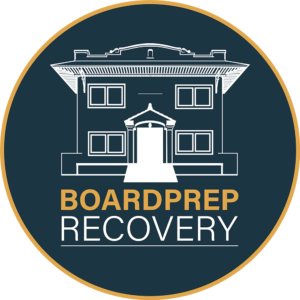According to a just-released estimate by the Centers for Disease Control (CDC), a record number of drug overdose deaths were reported this past year—93,000—a 29% increase over the previous record (in 2019).[1]
Brandon Marshall, a Brown University public health researcher who tracks overdose trends, said, “This is a staggering loss of human life. The nation was already struggling with its worst overdose epidemic, but clearly COVID has greatly exacerbated the crisis.”[2]
Per an Associated Press report, “Experts observed lockdowns and other pandemic restrictions isolated those with drug addictions and made treatment harder to get.”[3]
The CDC arrived at their dismaying findings by reviewing death certificates — the estimate of over 93,000 overdose deaths translates to an average of more than 250 deaths each day, or roughly 11 every hour.
Additionally, the CDC concluded that in 2020, deaths caused by drug overdose increased in all but two states, New Hampshire and South Dakota.
It’s worthy of noting for a sense of perspective, CDC statistics indicate less than 7,200 drug overdose deaths in the U.S. were reported in 1970, even though there was a heroin epidemic running rampant in many major U.S. cities. And in 1988, at the peak of the crack cocaine epidemic, the number of overdose deaths was around 9,000.[4]
For those struggling with a substance use disorder, particularly an addiction to opioids—the class of drugs which includes heroin, the synthetic opioid fentanyl and prescription pain relievers, such as oxycodone, hydrocodone, morphine and codeine—the ongoing COVID pandemic and subsequent governmental lockdowns and social distancing protocols and restrictions caused many to not only isolate and feel increasingly more alone, but also made it harder for them to get treatment.
And this combination of an addict’s battling with their obsession and compulsion to use, a sense of emotional disconnection and the decreased access to therapeutic treatment (i.e., medical help with detoxing, plus counseling, education about addiction and recovery principles, peer support and more) has resulted in what many now perceive to be one of the most dire aspects of the current healthcare crisis.
Some add blame for the huge increase of drug overdose deaths on the undeniable potency—and therefore danger—of fentanyl. Formerly, it was prescription painkillers (those mentioned above) that spurred the country’s widespread wave of overdose deaths. However, in recent years, it has been heroin and then fentanyl, that has become the drug most associated with drug deaths.
For context, fentanyl was developed to help those suffering from intense pain (for example, from major surgery or painful illnesses such as cancer). In 2017, it was the most widely used pain medication in the world.[5]
Unfortunately, fentanyl has made its way onto the streets, to be used either on its own or mixed with other drugs. As a result, this powerful, highly addictive opioid was found to have swiftly risen to the status of having caused more overdose deaths than any other drug.[6]
Since 2017, it has apparently only gotten worse. Dr. Shannon Monnat, associate professor of sociology at Syracuse University, who studies geographic patterns in overdoses, observed, “What’s really driving the surge in overdoses is this increasingly poisoned drug supply. Nearly all of this increase is fentanyl contamination in some way. Heroin is contaminated. Cocaine is contaminated. Methamphetamine is contaminated.”[7]
And according to Monnat, there’s no current evidence that more Americans started using drugs last year, due to the pandemic or otherwise. Rather, she says, “the increased deaths most likely were people who had already been struggling with addiction.”[8]
She added that her research team heard from many that suspensions of evictions and extended unemployment benefits left them with more money than usual. “And they said, ‘When I have money, I stock up on my (drug) supply.’”[9]
Greater access to treatment, clearly, would be a boon to those seeking recovery from addiction, especially given the COVI pandemic is still flexing its muscles, both here in the U.S. and worldwide.
[1] Provisional Mortality Data — United States, 2020 | MMWR (cdc.gov)
[2] https://www.huffpost.com/entry/bc-us-med-overdose-deaths-
[3] Ibid.
[4] Ibid.
[5] “Fentanyl And Analogues”. LverTox. 16 October 2017. Archived from the original on 7 January 2017. Retrieved 14 December 2017.
[6] Drug and Opioid-Involved Overdose Deaths — United States, 2013–2017 (nih.gov)
[7] U.S. Overdose Deaths Hit Record 93,000 During Pandemic Last Year | HuffPost
[8] Ibid.
[9] Ibid.







